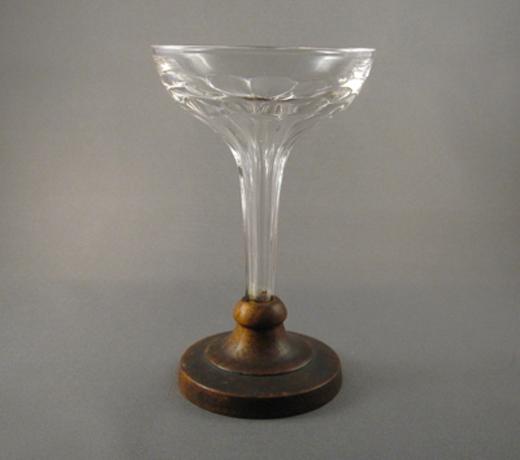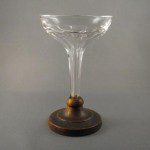Make-Dos: Beauty Beyond Repair
By • March 16, 2016 0 1659

If your interest in antiques is as much about an object’s previous owners as its decorative value, then make-dos is a category of antiques worth exploring.
Antiques with inventive — and often whimsical — old repairs (known as “make-do” repairs) are examples of necessity and thrift in a time when hard work and great expense went into handmade finery such as pottery, porcelain and glass. Unlike today, when we throw away anything that’s chipped, cracked or broken, practical folks of yore refused to throw out a broken object if it could be fixed to “make it do.”
There is something profoundly human about these clever repairs of broken objects. One can’t help but wonder about the stories behind their brokenness, which only make them more interesting. Was it a case of a lovers’ quarrel or butterfingers? Perhaps rough seas on an export ship?
The talent to use whatever materials were at hand to inventively repair or repurpose was not necessarily born out of a skinflint frugality. Rather, it often arose from the sensible belief that something that had a use could be breathed into life anew: the notion that “purpose” is an evolving concept.
Make-dos were not just for people of limited means, but were found in the homes of every social class, mostly in the 18th and 19th centuries. When an item broke, it was either repaired at home or taken to a local tinsmith, tinker or woodworker for repair.
If an object couldn’t be salvaged for its intended use, it was often refashioned into something else entirely. Sometimes broken handles, feet or whatever were replaced with beef or chicken bones. Pincushions were attached to wishbones to make them stand, and to broken candlesticks and lamp bases. Kitchen tools that had lost their handles were made “good as new” with long rib bones as handles.
Mirror glass used to be far too expensive to throw away, so make-do mirrors were made from pieces of broken glass carefully framed for reuse. You can usually tell a make-do mirror from its odd shape or size.
Although the sometimes quirky solutions can be quite whimsical, for every glass attached to a clunky wooden base, there is a piece of fine porcelain that has been enhanced in appearance and function, sometimes with expertly wrought silver handles or gold cuffs.
“Frankenstein monsters” of the antiques shop, they’re easy to spot: a mocha ware jug wrapped with a thick band of tin, with a makeshift handle affixed to it; a porcelain teapot with a metal cover or spout; a glass oil lamp atop a tiered wooden base; an oddly shaped piece of mirrored glass set in a carved wooden frame; a fancy glass compote with a metal base; a cracked platter, seemingly perfect on its face, but repaired on the flip side with metal staples. All are examples of make-dos, and the method of repair may range from humble and crude to elegant and elaborate.
Sometimes make-dos featuring tin were fashioned by tinsmiths, whose beautiful repairs actually add value to a piece. Such make-dos can be worth more than the same item in perfect condition (unless the perfect piece is extremely rare).
The value of make-dos depends upon age, quality, appeal and what the pieces are. Especially desirable are 19th-century examples with pressed or pattern glass parts that help identify and date the piece.
Make-dos are gaining in popularity as a collecting field, especially within in the last five years. Some seasoned auction-goers like make-dos because of their unique charm — practically no two are repaired in exactly the same way — and beginning collectors like them because they are still relatively inexpensive.
In fact, the most expensive make-do that Skinner Auctioneers has ever sold was a framed mirror fragment that went for $2,702.25 in 2005. Last November, Skinners sold a 19th-century mocha ware mug with a handle repair for $654.75. But for the most part, buyers can get still get make-dos for $200 or less at auction.
Sometimes I see a piece that I wish had been broken and repaired — to add to my collection of quirky but loveable make-dos.
*Michelle Galler is an antiques dealer, design consultant and realtor based in Georgetown. Her shop is in Rare Finds, in Washington, Virginia. Reach her at antiques.and.whimsies@gmail.com.*
- The base may have snapped off of this 1850 hand-blown champagne coupe during an exuberant New Year’s Eve toast. A nicely turned wooden base made it ready for the next toast. | Courtesy Andrew Basemen.
- Jordan Wright





